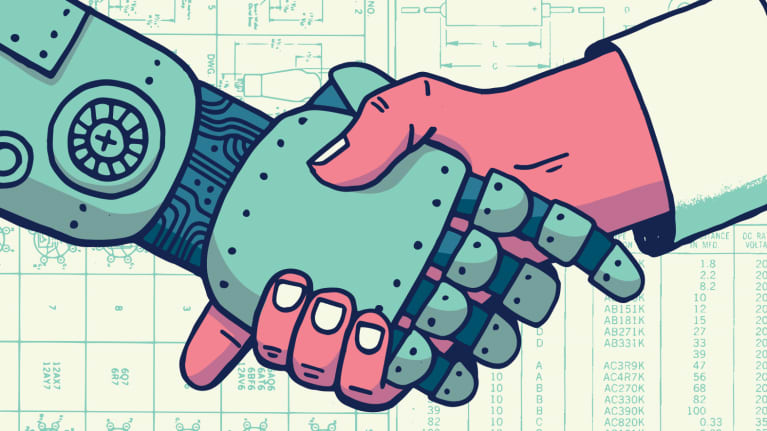This is from my girl Amanda of Enlightened Digital.
From industrial manufacturing to healthcare to food production, technology has had a significant impact on many of today’s business sectors. Emerging technological trends like automation, artificial intelligence (AI) and robotics are constantly changing business offerings and processes. Over 60 percent of executives expect AI to have a significant effect on their organization’s offerings in the next five years. In fact, this progression toward AI-powered operations is now being called the next industrial revolution.
AI has been around much longer than most people might realize. It’s been one of the most desired endpoints in software development for decades, and the idea of developing automations that could operate without human intervention originated as early as the 18th century. The intent behind AI is to free us from mundane repetitive tasks, giving us more time to increase our knowledge power and come up with more innovative business strategies.
We’ve been obsessing over “robots” stealing our jobs since the late 1700s. When the first industrial revolution hit, factories and mass production drew workers to cities in droves. Manufacturing put individual craftsmen out of business. With new advances in technology, consumers could purchase goods cheaper and faster than ever before, which was a good thing. True, many workers were displaced, but over time, new jobs were created and the employment rate grew.
How does this affect human employees? Studies show that more than 70 percent of Americans express wariness or concern about a world where machines perform many of the tasks previously done by humans. Research from Ball State University has even found a negative correlation in mental and physical health among employees working in fields with “higher risks of automation.”
The problem with warnings about the “robot revolution,” however, is that no two reports on the matter are exactly the same. While ScienceAlert anticipates that robots will eliminate over 3 million US jobs by 2025, Oracle CEO Mark Hurd predicts that 60 percent of all IT jobs that will exist in 2025 have yet to be invented. Predictions for the future of AI range from optimistic to devastating, differing by tens of millions of jobs even when comparing similar time frames. It’s evident that none of these statistics are created equal, so it’s no wonder the members of today’s workforce vary wildly in their feelings toward AI.
AI may destroy jobs, and it may also create them, but the debate for AI doesn’t have to be solely man versus machine. Many businesses have adopted AI technology to complement human work, allowing the latter to work more efficiently and effectively.
Just last year, Walmart announced it would begin testing shelf-scanning robots that can identify sold-out, missing or misplaced items. Jeremy King, Walmart’s US CTO, explained that the company wouldn’t be replacing its current human employees with robotic counterparts. Instead, the robots free employees from more tedious tasks, like walking the aisles to look for out of stock products. This AI allows Walmart employees to focus their time on filling the shelves, adjusting items left in the wrong place and resolving the problems to which the robots alert them, which efficiently ensures that Walmart locations are adequately and accurately stocked.
While AI often plays an incremental role in preventing human error, AI still needs human oversight to prevent its own errors. It took less than a day for Twitter users to train Microsoft’s Tay, an AI chatbot designed to interact with profiles on Twitter, to spout racist, sexist and generally terrible things. Emerging technologies like autonomous vehicles and improvements in current technologies (e.g., heavy machinery) still require human supervision to operate safely and without fault. To prevent these issues, AI models need more training data and proactive human oversight.
Though the worry that AI will take over many of the jobs now executed by humans is a valid concern, the potential for artificial intelligence to benefit humans appears limitless. In addition to eliminating jobs, AI’s need for people to train and oversee it can also create them. At its best, AI works with humans rather than in place of them, helping employees boost their productivity by taking over menial tasks so they can focus on more pressing matters.
